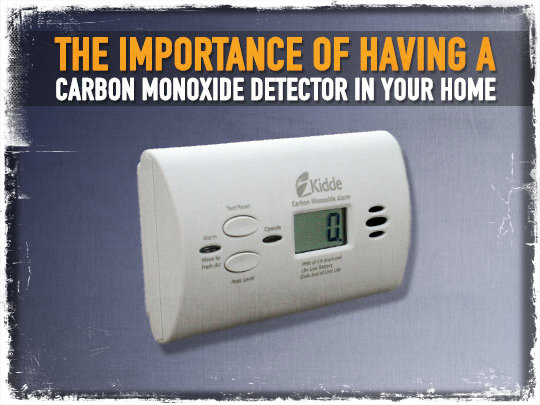
Carbon monoxide (CO) is a deadly, colorless, odorless, and poisonous gas. The gas is produced by the incomplete burning of various fuels, which include coal, wood, charcoal, oil, kerosene, propane, and natural gas.
Products and equipment powered by internal combustion engines such as portable generators, cars, lawn mowers, and power washers also produce CO (Consumer Product Safety Commission, 2015).
On average 170 people die each year in the United States from Carbon Monoxide gas poisoning produced from non-automotive devices. In 2005 alone, 94 deaths were attributed to gas powered generator use. The generators were placed in a confined space that allowed for the buildup of deadly CO. CO detectors were not in use or simply did not work.
A carbon monoxide detector or CO detector is a device that detects the presence of the gas before it reaches dangerous levels.
Simply put Carbon Monoxide will kill you in your sleep.
An audible alarm will sound, giving you time to evacuate, or to ventilate the area. Time is of the essence, and so not responding to the alarm can be deadly for you and your family.
Do You Need One?
You do if you burn wood, coal, kerosene, or wood pellets for heat or cooking and if the heating or cooking devices are in a confined space. You need one if you use propane or natural gas for cooking or heating and if you burn any carbon based materials of any sort in any confined space.
You need one if you use a backup generator, and even though it is situated outside the home fumes can enter through windows, doorways, cracks in the walls, and even through a dryer vent, or through heating/air conditioning duct work. You need one if you are unsure.
You need one if your hot water tank or dryer uses propane or natural gas, and you need one if you live in a building that uses a boiler that burns a fossil fuel to heat the building or the building’s hot water supply. Bio fuels will emit CO gas as well.
Yes you need one if you live in an apartment building that is heated by any type of fossil fuel, so know how your apartment building is heated. CO can collect in some areas of the building such as the basement, laundry room or storage areas, so inquire with the building’s management about detectors in common areas, and have one inside of your apartment as well.
Cold weather is upon some parts of the country right now, so people are burning wood in wood stoves and fireplaces, and in some cases starting for the first time this season their heating appliances.
Many of the CO detectors sold today operate off batteries, so like smoke alarm batteries they need to be replaced every year regardless of usage. Batteries deteriorate over time, so they do need to be replaced on schedule.
Certain CO detectors can be hardwired into your home’s electrical system, and often times CO, smoke and heat detectors are combined in one unit and hardwired in. However, it is important that any unit installed have a battery backup system in the event of a power failure.
Some CO detectors plug into a household receptacle making them portable in a sense. They can be carried to a work area in the garage and plugged in if you use any fuel fired heating device to warm the work area for a short period. Ideally, you would have CO detector in all areas of the home, because at some point you will forget to move it, and one time of forgetfulness can be deadly.
Symptoms of low to moderate CO poisoning is similar to the flu, but without the fever, and they can include:
- Headache
- Fatigue
- Shortness of breath
- Nausea
- Dizziness
High level CO poisoning results in progressively more severe symptoms, including:
- Mental confusion
- Vomiting
- Loss of muscular coordination
- Loss of consciousness
- Ultimately death
Consumer Product Safety Commission. (2015). Retrieved 2015, from http://www.cpsc.gov/en/Safety-Education/Safety-Education-Centers/Carbon-Monoxide-Information-Center/Carbon-Monoxide-Questions-and-Answers-/